
4 minute read
MARKET OF MEMORY Studio
Architectural Design
Semester 7 Faculty
Advertisement
Vision Statement
Public Spaces are continuously changing with times, and this renewal is a part of development of the urban scape, But does renewal and development mean the complete removal of the heritage of a place?
Johnson market is a market steeped in heritage value due to the shear legacy of over 90 years of it’s existence, inspiring heritage walks and invoking a strong image in the minds of users. And even though the structure has to be demolished due to it’s dilapidated state and due to the requirements of the city but how can we preserve heritage of a place while still meeting the requirements of the times? This is the question the project tries to work with.
This Preservation of the heritage of the Johnson market is done through two approaches, Firstly, Programmatic, Where the Original western axis of the market has been preserved with it’s columns and roof and houses the heritage center, with exhibits showing the history of the place the southern part of the arm is a refreshment zone, where Heritage walks can take place, under the octagonal roof in the center is an area which can act as a podium and is also the end point of the main axial spine. Along with that, there is a heritage community space and book cafe on the ground and first floor.
Architecturally, The essence of the market is tried to be retained in form of the original Axes which exist in the current market not only for their heritage value but also because they are arranged effectively to channelize people and create interaction spaces along them.

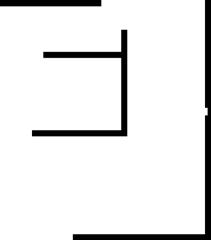
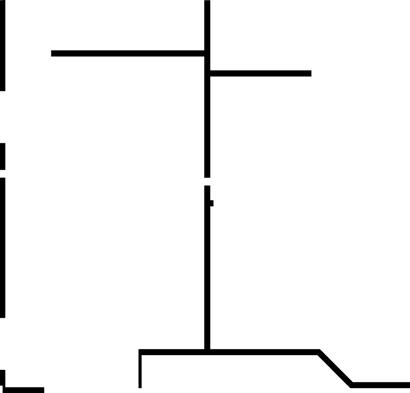

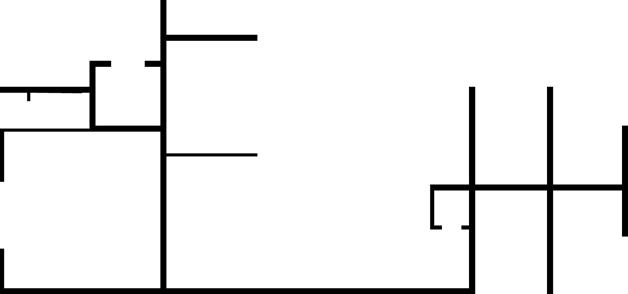
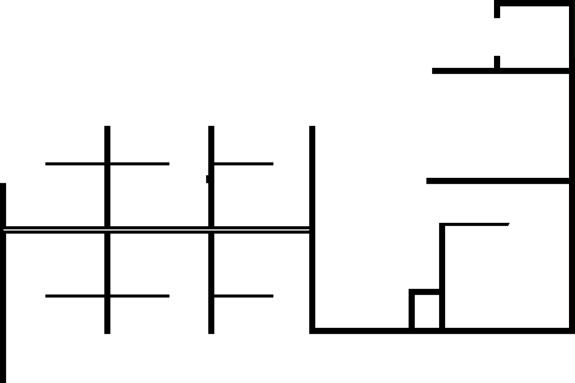
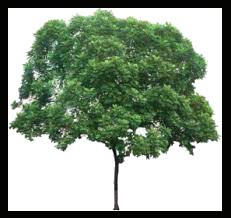


The East West axis of the original market becomes the main spine of the building and is treated with changes of volume with a double height space in the front, and an atrium near the center. Through this atrium space, rises a grand staircase which rises two floors ending in the community space on the third floor. Along the axis is the vegetable retail and E warehouse on one side and Refreshments and miscellaneous retail on the other. The axis culminates in the heritage center. The column grid has also been derived from multiples of the original grid and the character of the arched facade has also been reinterpreted in a modern form.

The elevation on all three sides has regularly spaced columns 8m apart which rise to the third floor and split into a Y column. This regular grid helps harmonise the varied massing of the building and along with the space frame roof on top ties the whole building with it’s multiple functions together. In the interstitial space between the columns, wood battens are fixed the primary function of which is acting as shading devices. But this also serves as a skin, and using the idea of voids and carving out space from the skin, the character of the arched facade from the original market is infused into the elevation by creating the arches by terminating the wooden battens in it’s form. This is how the iconic eastern facade of the Johnson’s market has also been reinterpreted and translated into the building. The form of the space frame roof in derived from the requirements of the function it houses going higher for the community center and dipping low to bring the corridors to human scale.
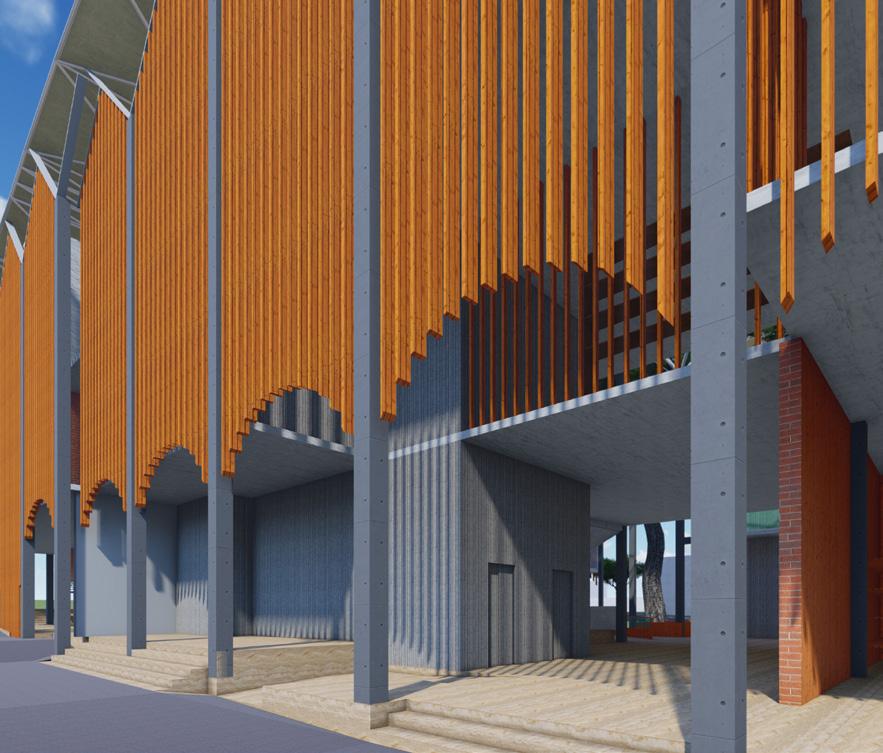
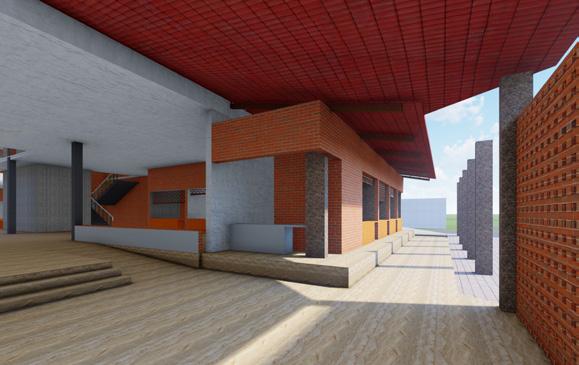








Forest of Peace Studio
Interior Design Semester
7 FACULTY
Pankaj Shivarama|Nandita Srinivas| Gowtham Nandakumar
Studio Brief
The overall objective of the studio is to explore design from the stand point of ‘Interior Architecture’ where the built and the contained are symbiotic and Mutually referential.
• The need to understand the idea of the new lived space in the current scenario and how it has changed the way one lives and works.
• To understand the envelope/shell provided, which defines the overall physical boundaries of the space and the edge conditions which create sub-spaces, interactive connectors and utilities. To explore materials and understand the strengths and limitations of each.
• We explore the idea of an aedicule [space within a space] as insert that investigates the existing heritage space as a folly, through its tectonic in terms of the ideas of luxury, craft, culture, multiplicity, memory, narrative, etc.
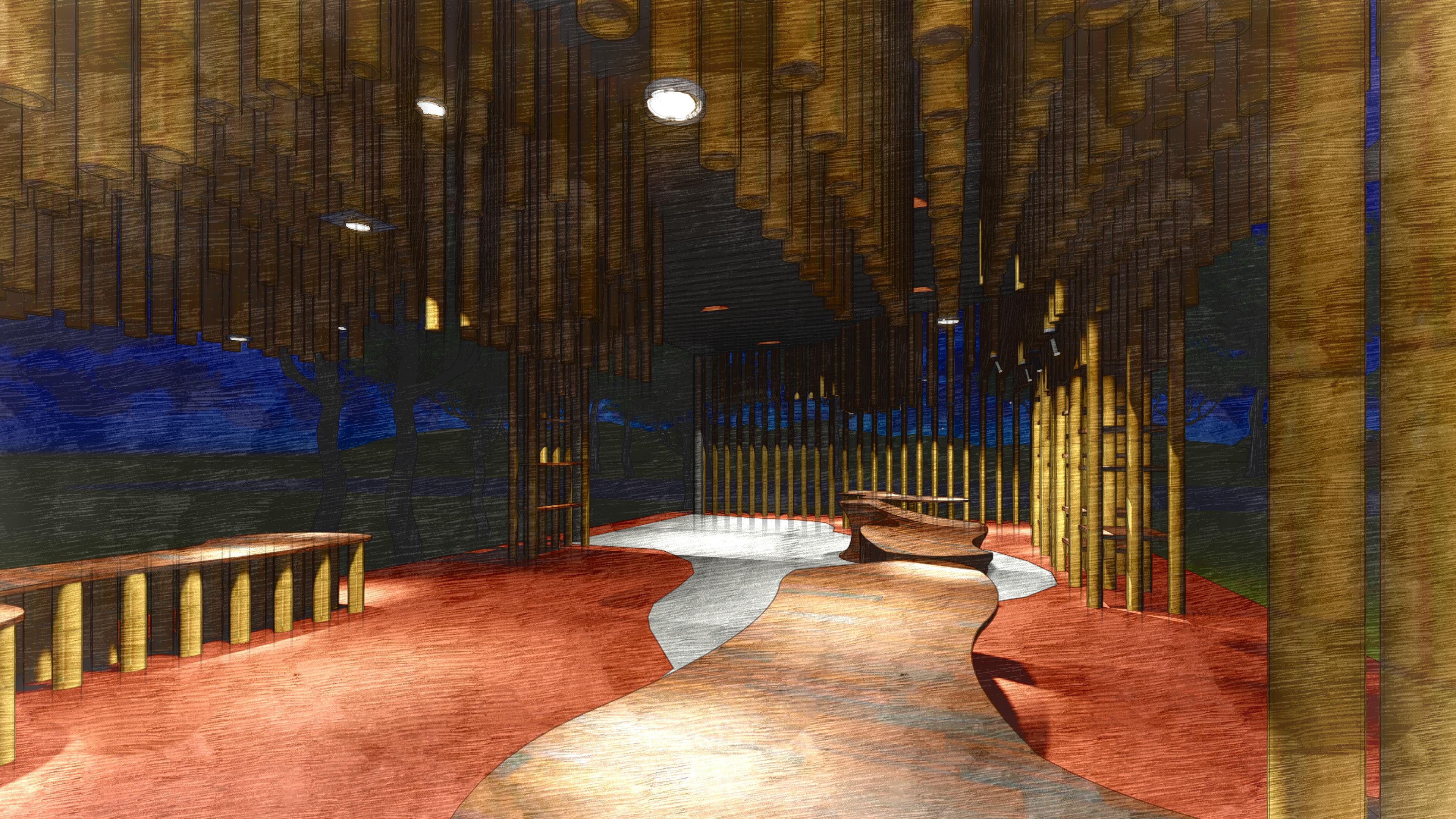
Site: Keonjhar, Odisha
Area: 400 sq m
Vision Statement
Keonjhar in the recent history has seen a rapid development of the mining sector,which has caused massive ecological impact on the region. But for the people of Keonjhar ecology isn’t a ‘Black rose’ to be kept in a glass box, but to them it is their way of life, from the tribal forest products grown in partnership with nature to agriculture, ecology and economy is invariably interlinked. Hence it is in this spirit of balance between economy and ecology that the project has been designed, where awareness towards Agro forestry and other ecologically sustainable practices reside in harmony with generation of revenue through sale of these Forest and Agro forestry products inside the Forest of Peace.
RAISUAN
POPULATION: 4821 (census 2011)
Cultivators : 281, Agriculture workers, 99 Cottage industry: 11
NON TIMBER FOREST PRODUCTS AND TRIBAL PRODUCTS
TRIBES
1656/4821 NTFP Producers
Leaves
Bark
Fruits
Gums and Resins
Seed Medicine
Cosmetic products
Food stuff
PROGRAM STATEMENT
Immigrant Workers from mines
Tribes from Mining affected areas
Tribes from Raisuan
Provision For Income and Spreading of Awareness about Forest Dependency
Urban Dwellers
AGRO FORESTRY AWARENESS AND TRAINING CENTRE
Cultivators and Farmers from Raisuan and Surroundings
Raising Awareness About the method of Agro Forestery to protect Forestey to protect forest cover and reforesting Abandoned mining areas
Trained Professionals, Agricultural Experts from City and colleges
NTFP And Tribal Products Centre
Tribal products display: 75 m2
NTFP based crafts Workshops: 75 m2
Storage: 30 m2
Agro Forestery Centre
Forestery products vending: 60 m2
Awareness and Infographic area: 40m2
Ministry of Agriculture outpost: 30 m2
Storage: 20 m2
Concepts
Immigrant Workers to mines
Tribes from Affected areas and Raisuan
INFOGRAPHIC SCREENS
ZONE OF AWARENESS
Idea of Forest cover (Battens) and Clearing (no battens)
Using the light nodes, the cutout ans Skylight as nodes to weave the idea of clearing and circulation around
Keeping the program and the idea of a forest in mind, the project tries to mimic the quality of light and space in the forest. This is achieved through using a grid of bamboo battens with differing heights from which spaces have been carved out of
Zone of Awareness
Zone of Exploration
Zone of Exploration Workshop
Zone of Impact
WORKSHOP
MOVABLE SEATING
ZONE OF DECISION
ZONE OF EXPLORATION
BAMBOO BATTENS, 100 mm DIA, 250 mm C/C, Varnished
SEATING
SHELVES
ZONE OF IMPACT
RECEPTION


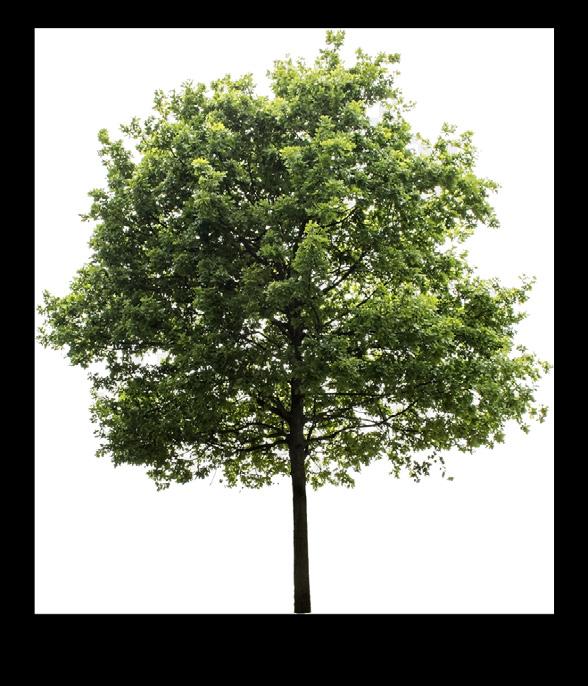






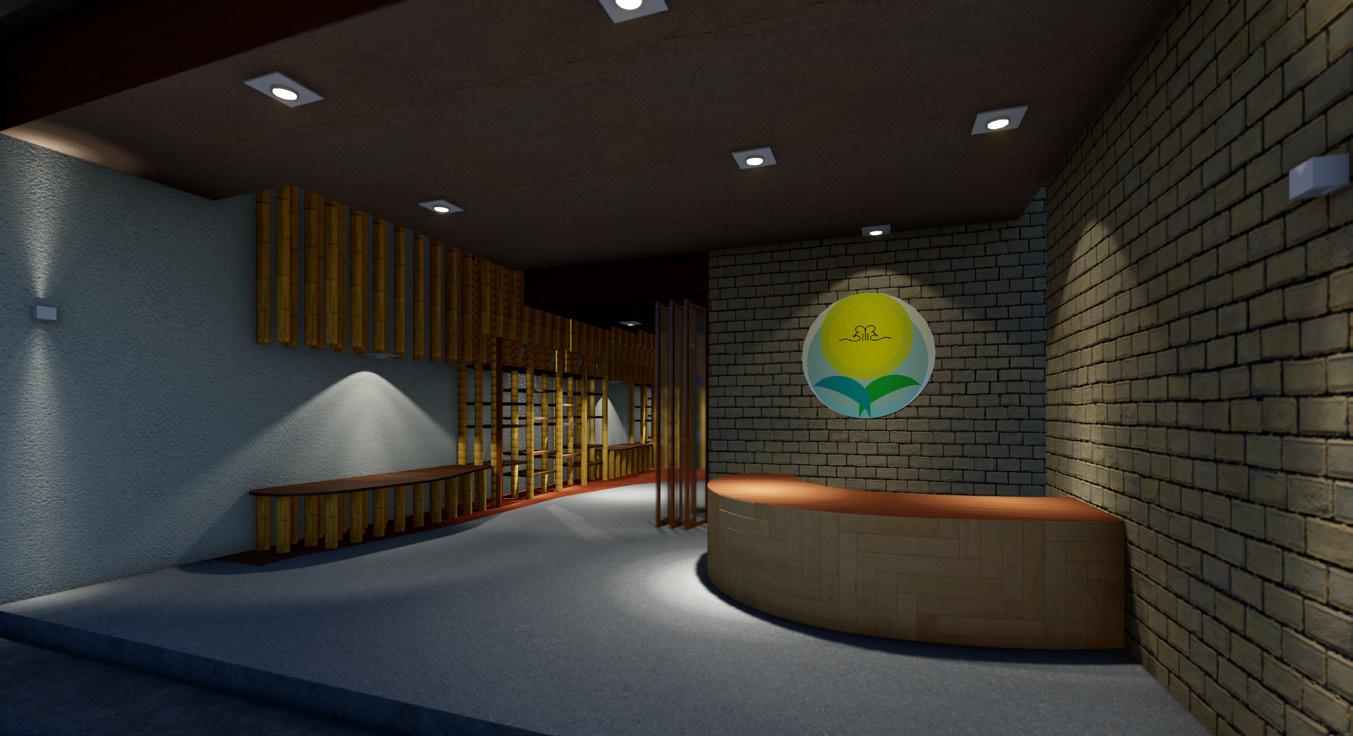



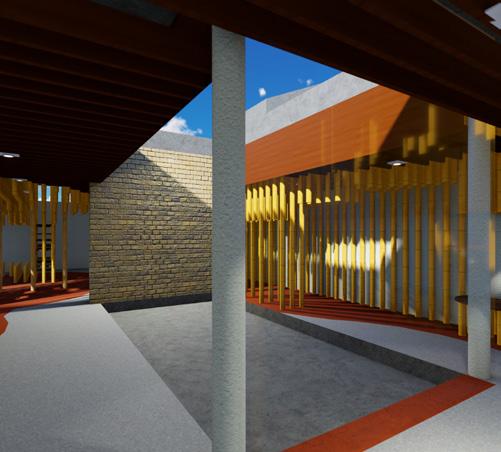

BATTENS Processed Bamboo, 100 mm Diameter 250 mm C/C, Bolted With end plates, Varnished
SPRINKLER
SPRINKLER
DOWNLIGHT, Philips GreenLEDi
LABEL, Clipped
SHELF TOP Ply Wood, 25 mm Th Screwed to frame, Oak textured Veneer
WALL, Exposed Stone Masonry, 350 mm Th, with recessed pointing
WALL
2305 2305 2105 1250 1805 2105 555
HVAC DUCT
DOWNLIGHT, Philips GreenLEDi
Construction and Furniture Details
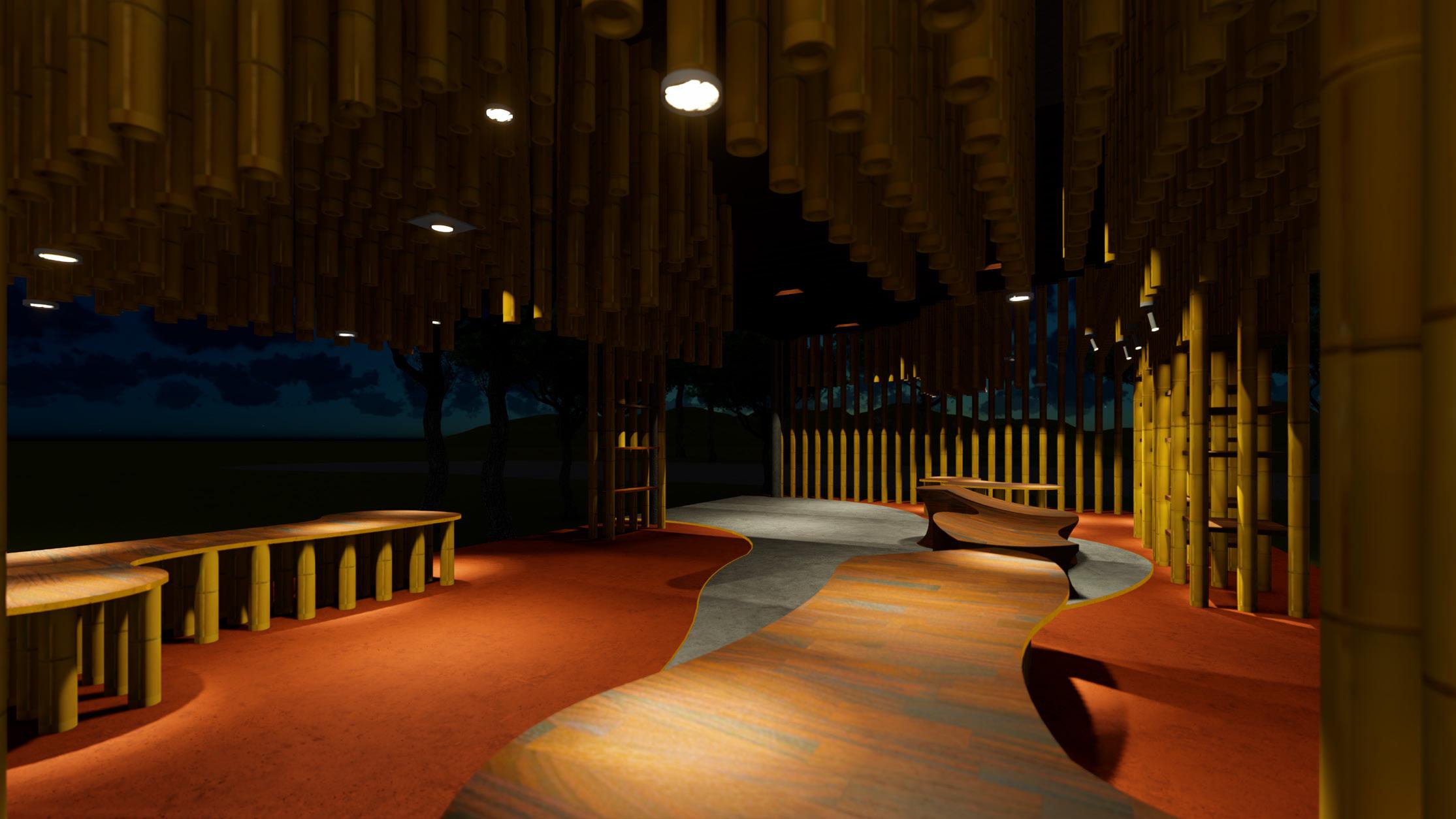

WALL
FLOORING, Cement Flooring, Tinted with red oxide Polish Finish










